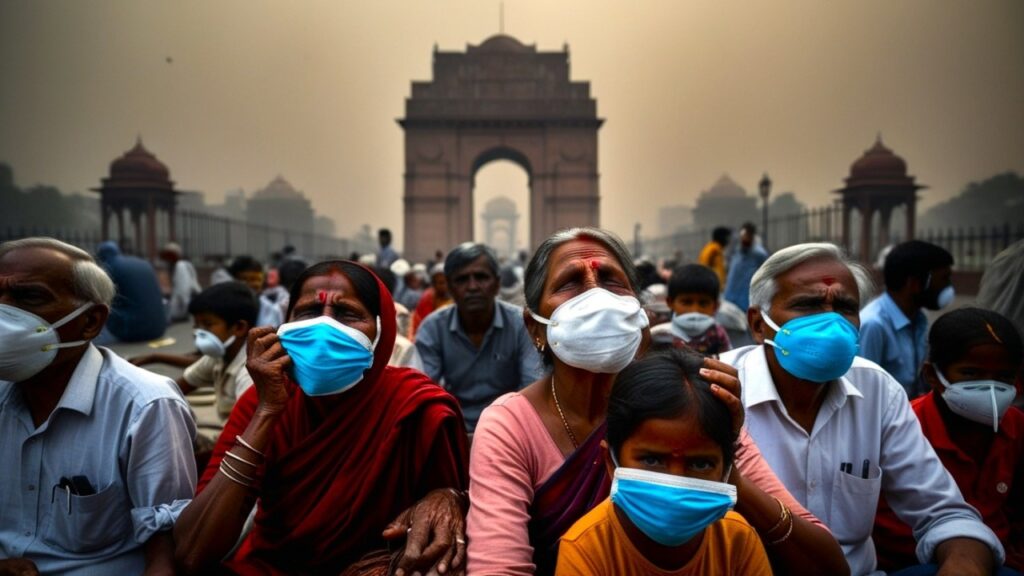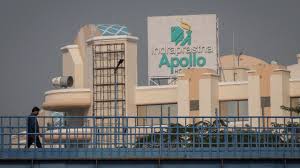Delhi-NCR Air Quality Concerns A Growing Crisis for Public Health and the Environment

Delhi and the National Capital Region (NCR) continue to grapple with one of the most pressing environmental issues in India: air pollution. The air quality in the region has long been a matter of concern, with levels of harmful pollutants consistently surpassing the safe limits set by health and environmental organizations. As Delhi-NCR continues to experience rapid urbanization, industrial growth, and a rise in vehicular emissions, the city’s air quality has worsened to alarming levels, putting the health of millions at risk and challenging the sustainability of the region’s ecosystem.
The Scale of the Problem
Delhi-NCR, which is home to over 20 million people, regularly ranks among the most polluted cities in the world. In 2024, data from the World Air Quality Index (AQI) and the Central Pollution Control Board (CPCB) indicated that air quality in the region frequently hovers in the “very poor” and “severe” categories. During the winter months, particularly from October to January, the pollution levels spike due to a combination of factors, including crop burning in neighboring states, a surge in vehicle emissions, construction dust, and unfavorable meteorological conditions.
In December 2024, the Air Quality Index (AQI) in parts of Delhi reached PM2.5 levels that were over 25 times the safe limit recommended by the World Health Organization (WHO). These figures are deeply concerning, as they indicate the presence of tiny particulate matter (PM2.5) and PM10, which can easily enter the lungs and bloodstream, posing serious health risks, particularly for children, the elderly, and those with pre-existing respiratory conditions.
Major Contributing Factors
Several factors contribute to the deteriorating air quality in Delhi-NCR, each exacerbating the pollution problem in unique ways:
Vehicular Emissions: Delhi is one of the largest vehicle markets in the country, with millions of cars, buses, and trucks plying the city’s roads. Vehicular emissions, especially from diesel-powered vehicles, are a major source of air pollution. Despite efforts to promote cleaner fuels and the adoption of electric vehicles (EVs), the sheer number of vehicles on the road continues to drive up pollution levels. The heavy traffic congestion also leads to longer travel times, further increasing emissions from idling vehicles.
Crop Burning: During the harvest season, farmers in neighboring states like Punjab, Haryana, and Uttar Pradesh resort to burning stubble to clear their fields quickly, despite a government ban on such practices. This results in a large number of toxic fumes being released into the atmosphere, which are carried by wind into Delhi-NCR. Stubble burning is a key contributor to the smog that blankets the city during the winter months.
Construction and Dust: Rapid urbanization and infrastructure development in Delhi-NCR have led to an increase in construction activities. The construction of buildings, roads, and other infrastructure projects generates large amounts of dust, which contributes to the rise in particulate matter in the air. Moreover, unpaved roads and construction sites that do not adhere to dust control measures further exacerbate the situation.
Industrial Emissions: Industries located in and around Delhi-NCR, particularly in the neighboring states, emit a wide range of pollutants, including sulfur dioxide (SO2), nitrogen oxides (NOx), and volatile organic compounds (VOCs). These industrial emissions, when combined with other local pollutants, create a hazardous smog in the region, especially during winter months when the dispersion of pollutants is limited due to cooler temperatures and low wind speeds.
Climate Conditions: Seasonal weather conditions contribute significantly to poor air quality. In winter, the phenomenon of temperature inversion traps pollutants close to the ground, preventing them from dispersing. Additionally, reduced wind speeds and foggy conditions worsen the air quality, causing a build-up of pollutants in the atmosphere.
Health and Environmental Impact
The impact of poor air quality on public health in Delhi-NCR cannot be overstated. According to various studies, long-term exposure to polluted air has been linked to a variety of health problems, including respiratory diseases, cardiovascular diseases, and lung cancer. Children, the elderly, and those with pre-existing health conditions, such as asthma or heart disease, are particularly vulnerable to the effects of air pollution.
In addition to respiratory problems, air pollution is also associated with mental health issues such as depression and anxiety. Studies have shown that exposure to high levels of air pollution can impair cognitive function and exacerbate conditions like anxiety and depression.
On an environmental level, pollution is not only harming human health but also contributing to the degradation of ecosystems. The pollutants that settle on water bodies, soil, and vegetation affect plant growth, water quality, and the overall health of the natural environment. In particular, the high levels of ground-level ozone and acid rain are harming agricultural productivity and biodiversity in the region.
Government Efforts and Initiatives
The government of Delhi, along with the state governments of Haryana, Punjab, and Uttar Pradesh, has taken several steps to address the air quality crisis. Some of the notable measures include:
Graded Response Action Plan (GRAP): The GRAP is a set of emergency measures that are implemented based on the AQI levels. This includes steps such as banning construction activities, restricting the use of diesel generators, and halting the entry of trucks into the city during times of severe pollution.
Odd-Even Scheme: Delhi has implemented the odd-even vehicle rationing scheme to reduce the number of cars on the road during peak pollution periods. Under this scheme, vehicles with odd and even-numbered license plates are allowed to ply on alternate days.
Promotion of Electric Vehicles (EVs): The Delhi government is pushing for the adoption of electric vehicles to reduce vehicular emissions. This includes providing incentives for EV buyers, setting up EV charging stations, and promoting electric buses for public transportation.
Improved Monitoring and Reporting: The Central Pollution Control Board (CPCB) and Delhi’s Pollution Control Committee (DPCC) are continuously monitoring air quality through a network of sensors. Real-time data is made available to the public through mobile apps, helping people make informed decisions regarding outdoor activities.
Public Awareness Campaigns: Various NGOs and government bodies have launched awareness campaigns to educate the public about the harmful effects of air pollution and ways to reduce their carbon footprint. These campaigns also focus on encouraging people to use public transportation, avoid open burning, and limit their use of private vehicles.
Despite the government’s efforts, the air quality in Delhi-NCR remains a significant challenge. Addressing the root causes of air pollution—such as vehicular emissions, crop burning, industrial pollution, and construction dust—requires coordinated action from both the state and central governments, as well as a shift towards sustainable urban planning, cleaner technologies, and greater public awareness. Given the severe health and environmental consequences of poor air quality, it is imperative for both policymakers and citizens to take collective responsibility for the future of Delhi-NCR’s air and environment. The need for long-term, systemic change has never been more urgent, as the lives of millions hang in the balance.

